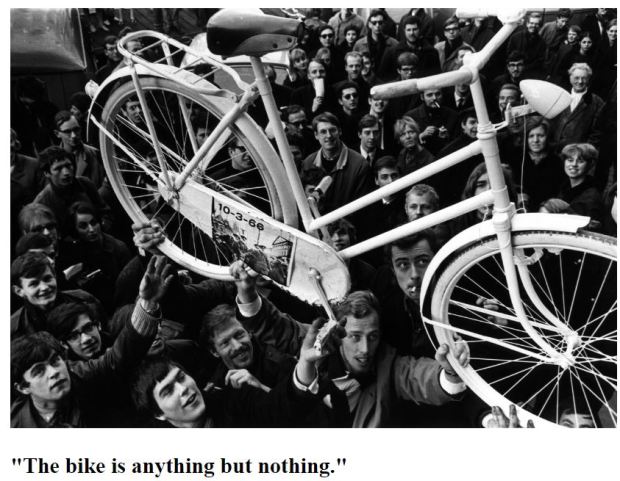The First Car Free Days Challenge: Toledo Spain, October 1994
Whereas Car Free Days have been organized in cities around the world all over the year for the last two decades, there is inevitably a spate of high activity in the month of September, much of it the result of the European Commission’s continuing commitment to both the concept of Car Free Days and their own European Mobility Week. And each year we here at World Streets dig into our archives and dust off one or two of the classics as a timely reminder of the fact that the Car Free Day concept has been around and doing its bit since the first international announcement and challenge was made in Toledo Spain on 19 October 1994.
 Why do we bother to do this year after year? After all, there is copious documentation and background available at a click, as a quick tour of Google of those three little words yields somewhat more than 55,000 entries, including a fair if distinctly uneven introduction in the Wikipedia article https://en.wikipedia.org/wiki/Car-Free_Days. The problem is that most of this material seriously misses the point, and as a result often handicaps cities and groups wishing to organize a Day (a week or month close) to underestimate potential of this approach. The trick is that all of this is quite a simple as it may at first glance appear.
Why do we bother to do this year after year? After all, there is copious documentation and background available at a click, as a quick tour of Google of those three little words yields somewhat more than 55,000 entries, including a fair if distinctly uneven introduction in the Wikipedia article https://en.wikipedia.org/wiki/Car-Free_Days. The problem is that most of this material seriously misses the point, and as a result often handicaps cities and groups wishing to organize a Day (a week or month close) to underestimate potential of this approach. The trick is that all of this is quite a simple as it may at first glance appear.
To this end, here we are once again minding the store with the original 1994 article announcing the concept, along with several others from our archives which would appear here in the coming days. A general reference which the reader may find of use is the general introduction which appears here – https://worldstreets.wordpress.com/tag/car-free-days/. You will find at the end of this reposting, three separate annexes which provide supplemental background on (Annex A) New Mobility – 1988-1994 Program Summary; (B) Other Tools to Get the Job Done; and (C) a listing of more recent references.








 The letter that follows is, as you will quickly surmise, not an actual communication from one elected official in one case, but rather a composite, a distillation of experience that I have had over these last years of trying to push the sustainable transportation agenda in many parts of the world, almost always in conjunction and in dialogue with mayors and other city leaders.
The letter that follows is, as you will quickly surmise, not an actual communication from one elected official in one case, but rather a composite, a distillation of experience that I have had over these last years of trying to push the sustainable transportation agenda in many parts of the world, almost always in conjunction and in dialogue with mayors and other city leaders.

 An important element of our Better Choices sustainability strategy is to achieve our carefully-considered objectives for the city, often very demanding, without avoidable social conflicts and divisions into opposing camps. For that we need to be attentive to soft policy techniques.
An important element of our Better Choices sustainability strategy is to achieve our carefully-considered objectives for the city, often very demanding, without avoidable social conflicts and divisions into opposing camps. For that we need to be attentive to soft policy techniques. Sarkissian and Lori Mooren reflects on the death in a road crash of Wendy’s husband and puts this dreadful experience in a wider context of how we should deal with eliminating death and injury on the roads and how we should improve our ability to react to tragedies of this kind. At a time when 3 cyclists this year (January and February 2017) have been killed in London (see reference list) we are even more acutely aware than ever that these horrific tragedies are not interrogated systematically and thoroughly and not translated into immediate action to get the chances of death and serious injury as near to zero as we can.
Sarkissian and Lori Mooren reflects on the death in a road crash of Wendy’s husband and puts this dreadful experience in a wider context of how we should deal with eliminating death and injury on the roads and how we should improve our ability to react to tragedies of this kind. At a time when 3 cyclists this year (January and February 2017) have been killed in London (see reference list) we are even more acutely aware than ever that these horrific tragedies are not interrogated systematically and thoroughly and not translated into immediate action to get the chances of death and serious injury as near to zero as we can. In the 1960s, a Dutchman named Luud Schimmelpennink created a ‘”white bike” plan to fight against harmful pollution and cars. His invention has changed public transportation around the world. So why did his bicycle-loving home city never embrace it?
In the 1960s, a Dutchman named Luud Schimmelpennink created a ‘”white bike” plan to fight against harmful pollution and cars. His invention has changed public transportation around the world. So why did his bicycle-loving home city never embrace it?




